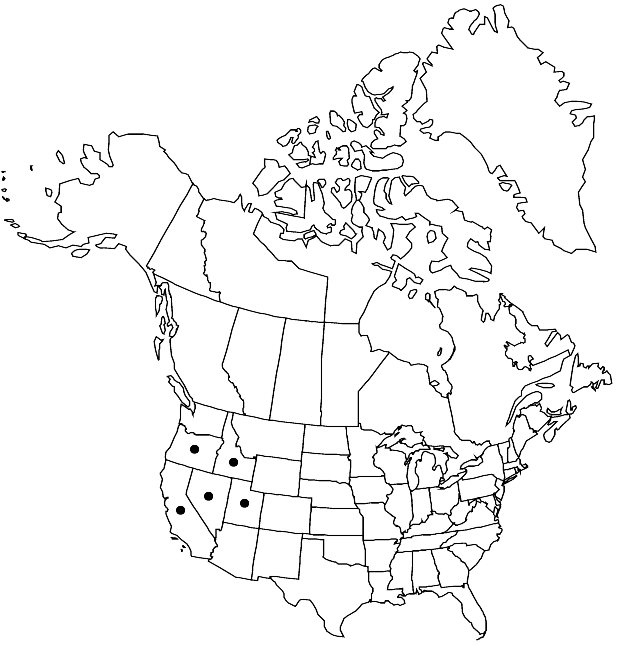Cleomella hillmanii
Proc. Biol. Soc. Wash. 18: 171. 1905.
Plants 10–55(–85) cm. Stems sparsely branched proximally (central stem dominant); glabrous. Leaves: stipules 3–5-fid, 0.5–1 mm (scarious); petiole 2–6(–8) cm; leaflet blade elliptic, ovate, or ovate-oblong, 0.8–2.4 × 0.4–1.4 cm, thin, margins entire, apex obtuse to retuse, mucronulate, surfaces glabrous. Inflorescences racemes, terminating stems, 3–10 cm (2–20 cm in fruit); bracts unifoliate, 5–9 mm. Pedicels divergent in fruit, 5–12 mm (4.5–17 mm in fruit). Flowers: sepals green, ovate-lanceolate, 1–2 × 0.5–0.7 mm, glabrous; petals yellow, oblong, (3.5–)4–8 × 1.8–2.2 mm, glabrous; stamens (well-exserted), yellow, 8–12 mm; anthers 2.5–3 mm; gynophore ascending, 3.5–15 mm in fruit; ovary ovoid, 1–1.3 mm; style (0.7–)1–2 mm. Capsules rhomboidal, 3.5–6 × 4–10.5 mm, glabrous. Seeds (1 or) 2–6, stramineous, globose, 2–2.7 mm, smooth.
Distribution

Calif., Idaho, Nev., Oreg., Utah
Discussion
Varieties 2 (2 in the flora).
Selected References
None.
Key
| 1 | Pedicels (6.5-)9-17 mm in fruit; gynophore (6-) 7-15 mm in fruit; capsules 4-7(-8) mm diam. | Cleomella hillmanii var. hillmanii |
| 1 | Pedicels 4.5-8.5(-10) mm in fruit; gynophore 3.5-6.5 mm in fruit; capsules (5-)6.5-10.5 mm diam. | Cleomella hillmanii var. goodrichii |